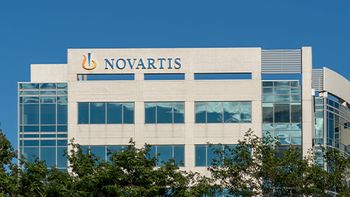
- Pharmaceutical Commerce - July/August 2009
Big Pharma R&D is getting more drugs into clinical testing
Biggest focus remains oncologic/immunologic and CNS drugs; about one in six candidates eventually gain approval, according to Tufts study
Big pharmaceutical companies, under pressure to generate new revenue streams as blockbuster patents expire, have been getting more internally discovered compounds into drug development in recent years, according to a new study from the Tufts Center for the Study of Drug Development.
The center analyzed data from the top 50 pharmaceutical manufacturers, ranked by 2006 sales. It estimated that the annual rate of drugs entering clinical trials increased 31% from 1999-01 to 2002-07, and that about one in six of the self-originated drugs that entered clinical trials will eventually gain marketing approval.
Manufacturers have been more aggressively weeding out unpromising candidates in Phase I and Phase II trials, and as result drugs that reached Phase III during 1999-2004 were more likely to eventually gain approval than those that reached Phase III during 1993-1998.
"Increasing the pace of new drugs entering development and terminating candidates that are unlikely to succeed is the right combination of trends that will help the industry counter the expected decline in revenues due to scheduled patent expirations," said Tufts CSDD Director of Economic Analysis and study author Joseph A. DiMasi.
Manufacturers are relying more on internally discovered compounds and less on licensing products that were discovered by others; the share of licensed products in development portfolios dropped to under 16% in 2005-2007 after peaking at 28% in 1999-2001.
Among six broad therapeutic categories analyzed, oncologic/immunologic and central nervous system (CNS) continue to be the areas of greatest activity, accounting for 22.8% and 24.1% respectively of the drugs entering clinical trials during 2005-2007.
The success rate varied widely by therapeutic category; about 27% of the self-originated systemic anti-infective drugs that entered clinical trials during 1993-2004 eventually gained approval, compared with close to 20% of oncologic/immunologic drugs and less than 10% of CNS and cardiovascular drugs.
Articles in this issue
about 16 years ago
The Rise of 'Companion' Diagnostics for Specialty Pharmaceuticalsabout 16 years ago
Our Readiness for the Attack of the Flu Bugabout 16 years ago
The State of the Industry in Product Securityabout 16 years ago
The Business Value of Brand Protectionabout 16 years ago
MeadWestvaco Readies Portable Medication Packagingabout 16 years ago
Manufacturing IT Association Sponsors Industry-Wide Performance Surveyabout 16 years ago
Oncology Drugs Add Promise, Stresses to Healthcare Deliveryabout 16 years ago
On-Demand Digital Printing Rewires Pharma PackagingNewsletter
Stay ahead in the life sciences industry with Pharmaceutical Commerce, the latest news, trends, and strategies in drug distribution, commercialization, and market access.





